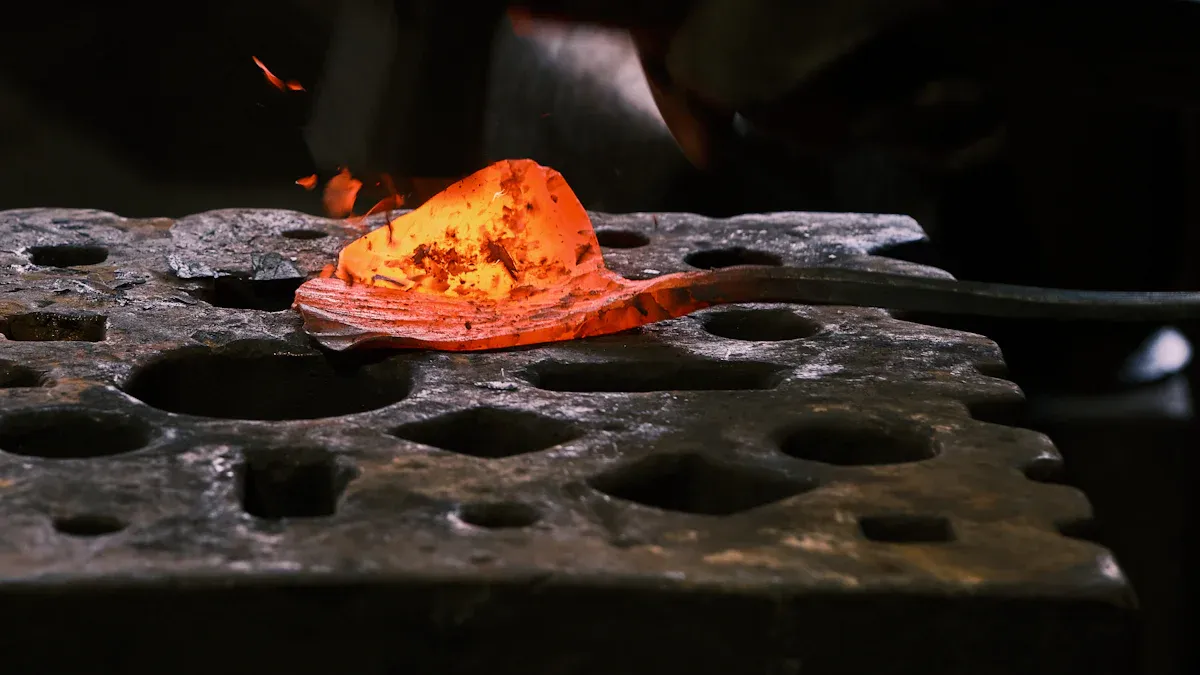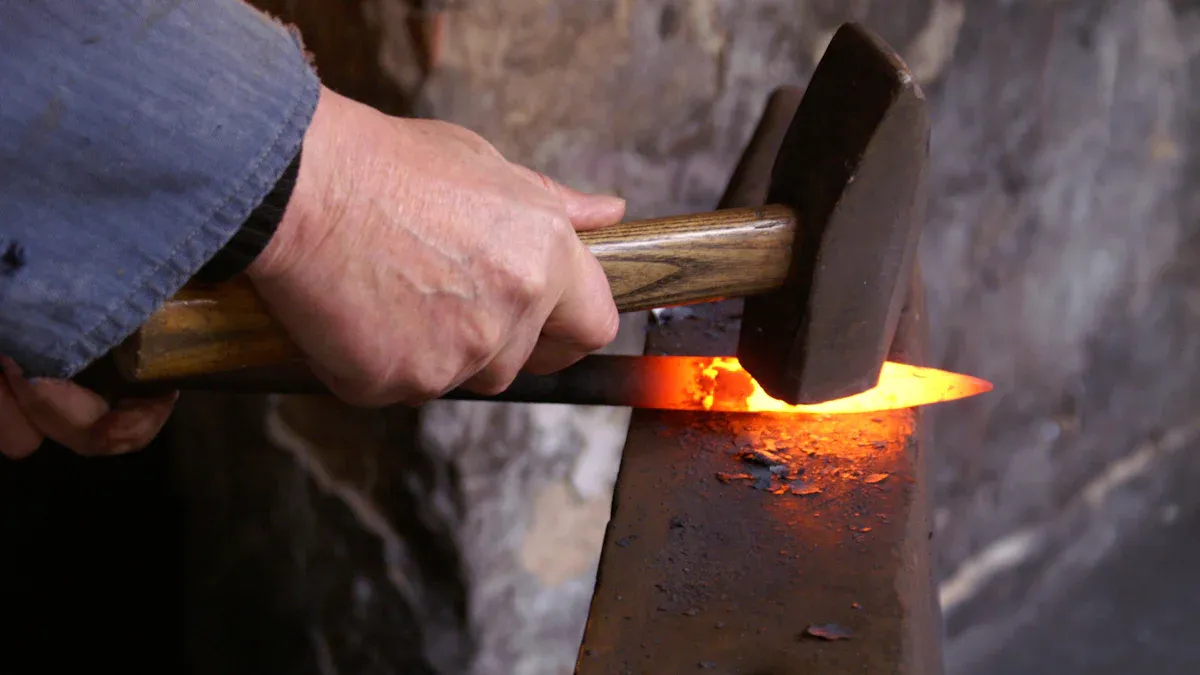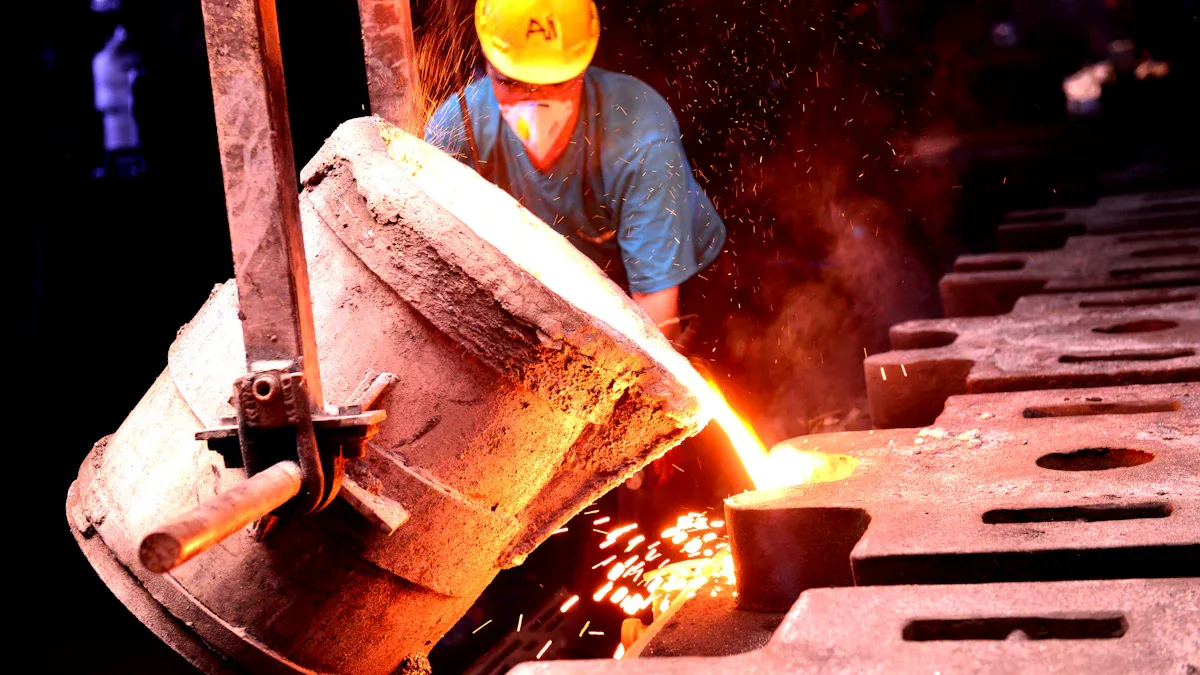
Selecting the appropriate tin bronze precision castings for ship parts guarantees dependable performance in challenging marine conditions. Tin bronze investment casting provides numerous benefits, such as corrosion resistance, exceptional mechanical strength, and wear resistance. The anti-frictional properties and biofouling resistance of tin bronze investment castings make it perfect for ship components like propellers and bearings, where durability and efficiency are essential.
Why Tin Bronze Precision Castings Are Ideal for Ship Parts

Corrosion Resistance in Marine Environments
Tin bronze stands out in marine environments due to its exceptional corrosion resistance. Its unique composition, with tin enhancing corrosion resistance and phosphorus improving wear resistance, makes it highly durable. When exposed to saltwater, tin bronze forms a protective layer of tin oxide. This layer prevents moisture and oxygen from penetrating the surface, ensuring the material remains intact even in harsh conditions. Compared to materials like pure copper or stainless steel, tin bronze offers superior protection against saltwater corrosion, making it a reliable choice for ship components like propellers and bearings.
Mechanical Strength and Durability
Ship parts often face extreme stress, and tin bronze precision castings excel in such conditions. This material boasts high mechanical strength, excellent wear resistance, and superior anti-friction properties. It performs exceptionally well under low-speed, high-load conditions and can withstand temperatures up to 500°F (260°C). These qualities make tin bronze ideal for manufacturing gears, pump impellers, and other critical ship components that require durability and efficiency.
Low Friction for Moving Components
Tin bronze alloys are known for their low friction, which is essential for moving parts like bushings and bearings. These anti-frictional properties reduce wear and tear, ensuring smooth operation and extending the lifespan of components. In marine environments, where high-speed, low-load applications are common, this characteristic becomes even more valuable.
Cost-Effectiveness for Shipbuilding Projects
Tin bronze precision castings for ship parts offer significant cost advantages. Recycling leftover bronze reduces raw material expenses and minimizes waste. Additionally, the durability of tin bronze lowers maintenance costs and downtime, making it a cost-effective solution for large-scale shipbuilding projects. Its combination of strength, corrosion resistance, and affordability supports the success of marine applications.
Key Considerations for Selecting Tin Bronze Precision Castings
Alloy Composition and Performance
The alloy composition of tin bronze plays a critical role in its performance for ship parts. Tin bronze typically consists of copper and tin, with tin content ranging from 4% to 12%. The most common formulation includes approximately 88% copper and 12% tin. Specific alloys, such as Bronze C90300, are widely recognized for their effectiveness in marine applications.
| Property | Description |
|---|---|
| Corrosion Resistance | Resistant to corrosion, making it ideal for marine environments. |
| Mechanical Strength | Operates under high loads (up to 4,000 lbs per square inch) and high temperatures (up to 500°F). |
These properties make tin bronze precision castings for ship parts suitable for components like propellers, bearings, and valves, which endure high stress and saltwater exposure.
Compliance with Marine Standards
Marine environments demand materials that meet strict standards for safety and performance. Tin bronze alloys must comply with industry regulations, such as ASTM and ISO standards, to ensure reliability. Shipbuilders should verify that the castings meet these requirements before use. Compliance guarantees that the material can withstand the harsh conditions of marine applications, reducing the risk of failure.
Balancing Cost and Quality
Balancing cost and quality is essential when selecting tin bronze castings. Choosing the right alloy for the application can optimize both factors. For instance:
- Recycling scrap materials reduces raw material costs while maintaining product integrity.
- Streamlining the casting process minimizes waste and improves efficiency.
- Energy-efficient practices lower production costs and promote sustainability.
Shipbuilders can also collaborate with foundries to address potential issues early, ensuring molds and patterns are designed to minimize defects. This approach helps maintain quality without inflating costs.
Longevity and Maintenance Requirements
The longevity of tin bronze components significantly impacts maintenance costs. These components resist seawater corrosion, leading to fewer replacements and less downtime. For example:
- Bronze bearings in marine environments show exceptional durability.
- Components made from tin bronze can last up to three times longer than copper under heavy-load conditions.
- This extended lifespan translates to long-term savings, even if the initial investment is higher.
By prioritizing durable materials, shipbuilders can reduce maintenance efforts and ensure reliable performance over time.
Evaluating Suppliers for Tin Bronze Precision Castings
Certifications and Industry Standards
When choosing a supplier, certifications and adherence to industry standards are critical. These credentials ensure the quality and reliability of tin bronze precision castings for ship parts. Suppliers should hold certifications like ISO 9001:2000, which guarantees consistent quality management, and ASTM UNS C90810, which confirms compliance with copper alloy casting standards.
| Certification | Description |
|---|---|
| ISO Certified | Indicates compliance with international quality management standards. |
| ASTM Standards | Ensures materials meet industry specifications for performance and safety. |
| RoHS Compliant | Confirms products meet environmental safety regulations. |
These certifications demonstrate a supplier’s commitment to delivering high-quality components that meet marine application requirements.
Expertise in Marine Applications
Suppliers with marine expertise understand the unique challenges of shipbuilding. They proactively identify and resolve issues, such as pattern defects, before production begins. Mold design plays a significant role in minimizing errors during casting. Advanced inspection techniques, like X-rays and ultrasounds, ensure the integrity of each component.
| Key Practices | Description |
|---|---|
| Proactive Issue Identification | Prevents defects by addressing problems early in the process. |
| Mold Design Optimization | Reduces errors and ensures precise casting. |
| Advanced Inspection Methods | Verifies quality and durability of components. |
This expertise ensures that the castings perform reliably in harsh marine environments.
Inspection and Testing Processes
Rigorous inspection and testing processes are essential for maintaining quality. Suppliers should conduct mechanical property tests to assess strength, ductility, and resistance to deformation. Non-destructive testing methods, such as X-rays and visual inspections, help detect internal and surface defects without damaging the castings.
| Inspection Method | Description |
|---|---|
| Mechanical Properties | Tests hardness, impact resistance, and service load capacity. |
| Casting Soundness | Uses destructive and non-destructive methods to identify flaws. |
| Non-Destructive Testing | Includes X-rays, ultrasound, and visual inspections to ensure usability. |
These processes guarantee that the castings meet the demands of marine applications.
Customer Feedback and Case Studies
Customer feedback and case studies provide valuable insights into a supplier’s reliability. Positive reviews highlight consistent quality and excellent service. For example, Ningbo Pingheng Machinery Co., Ltd. has earned a reputation for delivering durable and cost-effective components. Their use of investment casting with medium-temperature wax ensures precision and adaptability to different standards.
By reviewing feedback and studying real-world applications, shipbuilders can select suppliers with proven track records.
Advantages of Tin Bronze in Shipbuilding

Superior Performance in Harsh Conditions
Tin bronze performs exceptionally well in challenging marine environments. Its resistance to saltwater corrosion makes it a reliable choice for ship parts like propellers and bearings. The material’s composition, which includes tin and phosphorus, enhances its wear resistance and stiffness. When exposed to seawater, tin bronze forms a protective tin oxide layer. This natural barrier prevents degradation, even in polluted or humid conditions. Additionally, its thermal conductivity and machinability ensure consistent performance, making it ideal for critical ship components.
- Exceptional resistance to saltwater corrosion.
- Protective tin oxide layer prevents surface damage.
- High mechanical strength and wear resistance.
Reduced Maintenance Costs
Tin bronze precision castings for ship parts significantly lower maintenance expenses. Components like bearings and bushings last longer than those made from other materials. For instance:
- Bronze bearings outlast copper ones by up to three times under heavy loads.
- Propellers and fittings made from tin bronze often remain functional for decades.
- Its corrosion resistance reduces the need for frequent repairs.
These qualities translate to fewer replacements and long-term savings for shipbuilders.
Long-Term Durability and Reliability
Durability is a hallmark of tin bronze. Its ability to withstand harsh marine conditions ensures reliability over time. Components like valves and gears maintain their integrity under high stress and heavy loads. This longevity reduces downtime and enhances operational efficiency, making it a trusted material in shipbuilding.
Environmental Sustainability and Recyclability
Tin bronze supports sustainable shipbuilding through its recyclability. Reusing this material conserves resources and reduces energy consumption by about 70% compared to primary production. It also minimizes waste and pollution, contributing to cleaner air and water.
| Benefit | Description |
|---|---|
| Resource Conservation | Reduces the need for mining and processing tin ores, preserving natural resources. |
| Energy Savings | Uses about 70% less energy compared to primary production, lowering greenhouse gas emissions. |
| Waste Reduction | Minimizes landfill waste, supporting a circular economy by extending product lifecycles. |
| Pollution Reduction | Produces less pollution than raw material extraction, contributing to cleaner air and water. |
By choosing recyclable materials like tin bronze, shipbuilders can align with eco-friendly practices while maintaining high performance.
Selecting tin bronze precision castings for ship parts ensures durability, efficiency, and cost savings. This material resists corrosion, handles high loads, and reduces maintenance needs. Shipbuilders benefit from its reliability in critical systems like propellers and valves. By considering alloy properties, supplier expertise, and long-term value, they can make smarter choices for successful projects.
FAQ
What makes tin bronze better than other materials for ship parts?
Tin bronze resists corrosion, handles heavy loads, and lasts longer in marine environments. Its low friction and durability make it ideal for critical ship components.
How can I ensure the quality of tin bronze castings?
Choose suppliers with certifications like ISO 9001 and ASTM compliance. Look for advanced testing methods, such as X-rays, to verify casting integrity.
Does Ningbo Pingheng Machinery Co., Ltd. offer custom casting options?
Yes! They use precision casting processes to create components from tin bronze, silicon brass, and stainless steel. They also meet various national standards for custom needs.
